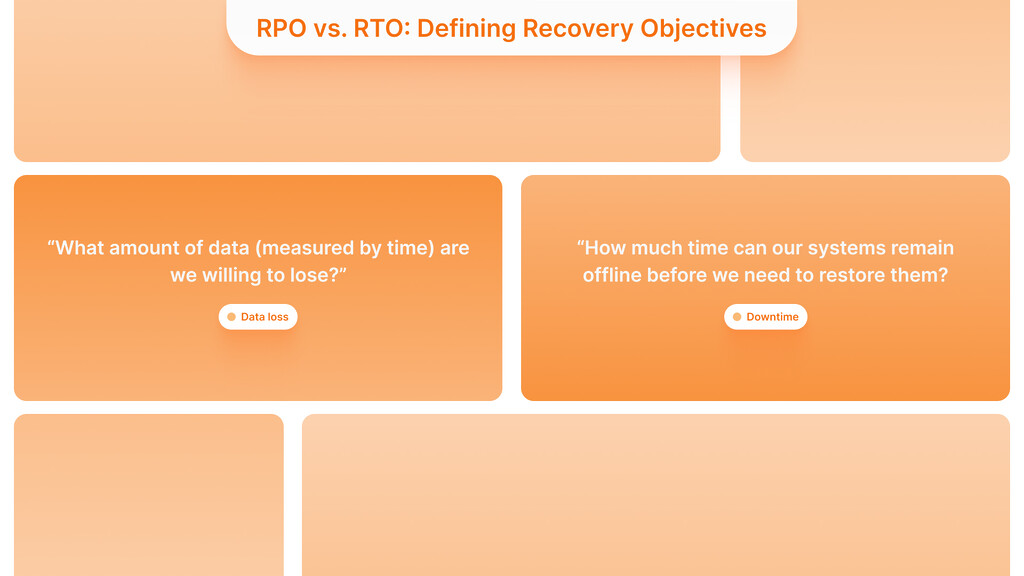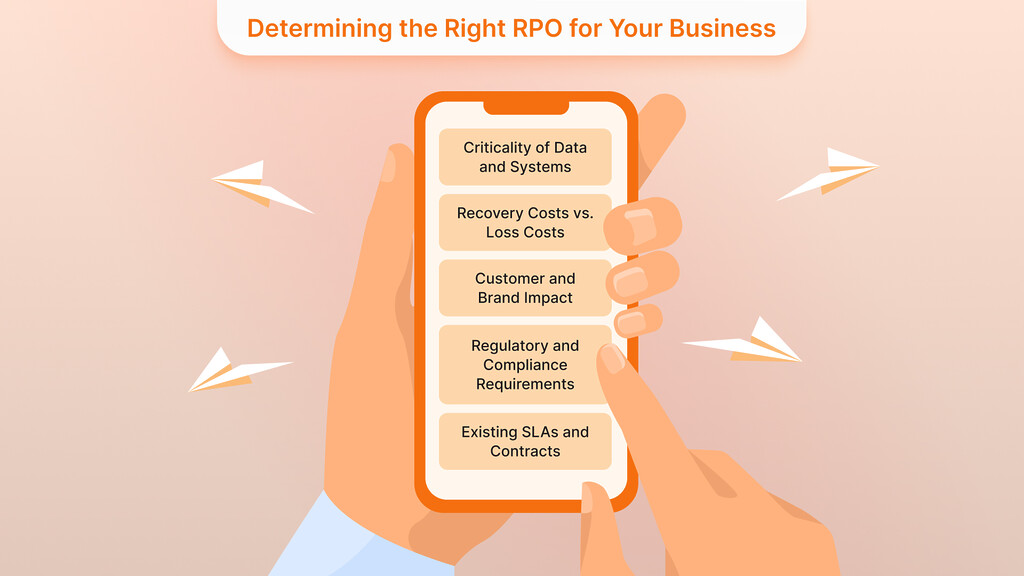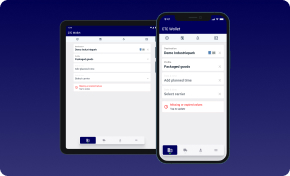Since data is a key resource for businesses today, knowing how to secure and restore it is essential. Whether you lead a small SaaS company or a large corporation, disaster recovery is essential.
Recovery Point Objective (RPO) is the most important metric included in this strategy. You will learn about RPO, how it measures up against other recovery metrics, and why it is so crucial for businesses in web application, custom web development, and backend development.
Understanding Recovery Point Objective (RPO)

In today’s digital economy, data is the lifeblood of technology-driven businesses. Any interruption – from cyberattacks to hardware failures or natural disasters – can halt operations and erode customer trust. Recovery Point Objective (RPO) is a key metric that helps leaders quantify the amount of data they can afford to lose during an outage before it causes serious business harm.
Accelerate Your Growth with Digital Transformation
Digital Excellence Through Customized Business Solutions
Explore Digital TransformationIn simple terms, RPO is the maximum age of files or data that must be recovered to resume normal operations. For example, an RPO of “one hour” means that if a failure occurs, the business can tolerate at most one hour’s worth of data loss; backups or replications must ensure that at least the last hour of work is preserved.
By establishing clear RPO targets in a disaster recovery or business continuity plan, organizations align their technology investments and processes with their tolerance for data loss.
RPO vs. RTO: Defining Recovery Objectives
There are two types of recovery objectives that work well together.
RPO is about data loss and asks, “What amount of data (measured by time) are we willing to lose?”.
RTO, on the other hand, deals with downtime and asks, “How much time can our systems remain offline before we need to restore them?”.
So, for an RTO of four hours, the business must have its processes running again within four hours after the incident. RPO and RTO play a crucial role in disaster recovery by establishing the backup schedule and determining the speed of restoration for IT and business leaders.
Usually, critical applications require having both RPO and RTO times as low as possible to ensure constant availability for users. By combining RPO and RTO, a business gets a clear picture of how much data loss and downtime the plan should cover.
Why RPO Matters: Data Loss and Business Continuity
Sometimes, a minute of missing data can cause businesses to miss out on profits, lose productive time, and disappoint clients. Because everything is online, people expect uninterrupted service every moment; a little time without service can harm your business and reputation.
An RPO enables us to measure the risk. It expresses the success or failure of a company in terms that technical experts can understand. An example is that a financial services firm or payment gateway will likely request an RPO measured in minutes, but a slightly larger internal database may accept a daily RPO.
Establishing RPO leads the organization to consider what it would cost if it lost an hour of data. One day? One week? The answers help determine the backup strategy and the technology to invest in.
Recovery objectives are also included in both disaster recovery (DR) and business continuity plans. RPO ensures that your DR strategy is appropriate – it determines the amount of data loss you can tolerate, allowing you to design a backup system that works for your company.
If your backups are outdated, they won’t help much in an emergency, so having fast access to your essential data is truly reassuring. All in all, if an RPO is clear, data loss is limited, and the operations, income, and image of the company are protected.
Backup Strategy and Disaster Recovery
To meet an RPO, you must have a reliable way of backing up and recovering your data. To ensure databases or files are recoverable if lost, it is important to copy them to another system or place, which is known as data backup.
Typically, people use full, incremental, or differential backups, or they rely on continuous data protection (CDP) and replication. You can follow the rule of keeping three backups of your data, one on each of two types of storage and one stored elsewhere. It is through disaster recovery planning that IT teams determine which systems should be backed up and how those backups can be restored if there is an emergency.
RPO is usually detailed in the company’s BCP and links to how much data loss the business can handle with its backup schedule. As a result, “an RPO of 60 minutes means that the system should be backed up every hour to prevent more than an hour’s worth of data from being lost.”
Key strategies to achieve RPO include:
- Frequent Backups: Perform backups no less often than at the RPO interval. Important data could require a backup every few hours. If you back up your data more frequently, you reduce the risk of losing it.
- Continuous Replication: For essential databases and applications, always use continuous replication that occurs almost instantly. As a result, recent data is kept at another location, which means RPO is now measured in minutes or seconds.
- Offsite and Cloud Storage: Place your backups in other areas or the cloud to ensure they are safe if a disaster occurs where you are. Making off-site copies prevents data loss due to fires, floods, or ransomware at the main location.
- Prioritize Critical Data: Some data is more crucial than others. The importance of each system should be ranked so that critical data is backed up with more urgency (and therefore has a less harsh RPO) than less crucial information.
- Regular Testing: Test your backups and your disaster recovery plan from time to time. Testing shows any problems in the plan, making it possible to lower the RPO for the actual practice.

When organizations use all these ideas together, they can ensure their data protection fits their targeted RPO and also reduces costs. For example, ongoing protection techniques may reach a “zero RPO” level, but they need more infrastructure to work.
Alternatively, having a longer RPO means you can back up your data less often, which is simpler and costs less. Making the right combination is an essential part of recovery planning.
Being able to automate infrastructure is essential for disaster recovery. As mentioned in Infrastructure as Code: A Comprehensive Guide, businesses can quickly rebuild environments and meet RPO standards thanks to automation.
Real-World Example: The Cost of a Poor RPO
Assume a mid-size e-commerce company receives an average of $10,000 in orders every hour. Due to this attitude, only daily backups are performed for top executives (RPO = 24 hours). On this particular Monday, a technical issue with the software caused their order system to crash at 2:00 PM.
The latest backup was done at 8:00 AM. In other words, approximately six hours of orders are lost, which translates to a $60,000 sales loss. The business struggles to recreate customers’ orders, inconveniencing them, has to refund or offer discounts (which costs money), and deals with embarrassing setbacks on social media.
The trust of customers decreases as they question whether their data is protected. If the RPO for the company had been set to 1 hour, it could have had regular backups or replication, limiting the loss to $10,000. As shown here, not having a clear RPO can lead to increased disruption, lost earnings, and harm a company’s reputation.
Note: Although this scenario is an example, research indicates that tech companies can lose thousands of dollars per minute when their systems are not functional. A clear RPO helps to minimize data loss and downtime and, as a result, reduces these costs.
Frontend transitions should be prepared for with a well-planned backup. The Successful Frontend Transition Strategies article explains that data should be carefully managed when migrating to avoid any RPO issues.
Determining the Right RPO for Your Business

Determining the right RPO is an essential decision for any company. First, you need to perform a BIA: decide which data and applications are the most important and measure the effects of losing them. We must pay attention to the following factors:
- Criticality of Data and Systems: Which systems process or store information that earns the company money? In most cases, financial transactions, customer information, and intellectual property require RPOs that are measured in minutes or less. Loss of archival and internal data can be tolerated for a more extended period than more important data.
- Recovery Costs vs. Loss Costs: The higher the RPO, the lower the recovery costs. When RPOs are very low, the required technology can be costly (for example, utilizing high-speed replication and additional storage). Consider how much it would cost and how severe the loss of data would be for the business. If one lost hour of sales brings a $50,000 loss, faster backups might be needed.
- Customer and Brand Impact: Affect on Customers and Brand: What kind of impact will losing data have on customers and the company’s reputation? Firms that serve consumers aim for strict RPOs to build and maintain the confidence of their clients.
- Regulatory and Compliance Requirements: Some industries must comply with laws that require them to be able to recover data. These strict rules (HIPAA, SOX, GDPR, etc.) for banks, healthcare providers, and publicly traded companies often require them to keep their recovery point objectives very low for specific data.
- Existing SLAs and Contracts: If you offer clients a certain level of uptime, establish what their RPO and RTO must be. All service-level agreements and recovery SLAs with customers should be followed.
These factors should help you decide on the RPO for each important system. Have members of the IT, business, and legal/compliance departments join the discussion. Include the selected RPOs in the continuity plan and make sure the leaders have approved them.
IT Consultancy Designed Around Your Business Objectives
Expert Guidance to Optimize Your Technology Strategy
Discover IT ConsultingKeep in mind that RPOs must be reviewed and modified from time to time as the business develops (if more applications, higher transactions, or new regulations are introduced, tighter RPOs are usually required).
Implementing and Testing RPO
After deciding what needs to be done, begin implementing the targets:
- Align Technology to RPO: Use backup and replication tools to achieve the RPO required by your business. When the RPO is minutes, make sure to use continuous data protection or synchronous replication. If you use an RPO that is measured by hours, schedule your backups to happen regularly. These services enable you to automate much of the process.
- Off-site and Redundancy: Ensure that your backups are stored separately from the original data. Utilize storage at multiple locations to ensure that all copies are not compromised if an issue occurs at one location. In most cases, it is included in a DR plan as a way to recover systems following a disaster.
- Regular Testing: Conduct regular tests by simulating failures and then attempting to restore your data. Testing ensures that data can be recovered within the required Recovery Point Objective (RPO) and Recovery Time Objective (RTO), and helps identify any missing steps in the procedure or technology. Once a test is done, review the plan and work on those parts where things did not go as planned. Tech experts recommend running backups and verifying them, as untested backups may not function properly when needed.
- Monitoring and Updates: Continuously keep an eye on your backups to verify that they are not failing (if backups fail without notice, the RPO is broken). Always maintain a list of essential systems and update the RPOs when the company’s priorities change. A system that is now connected to the internet may need its RPO to be reassessed.
Ensuring your recovery goals are part of daily operations and confirmed in routine exercises enables you to recover successfully.
RPO for Resilience, Trust, and Compliance
If an RPO is clearly understood and adhered to, it significantly supports an organization’s resilience. If something breaks in the system, recent backups enable the business to recover swiftly and reduce financial damage. When customers and partners see that the service is strong, they build trust in the industry.
Analysts and research point out that experiencing significant data outages impacts both a brand’s reputation and the number of repeat customers. Alternatively, a proven RPO system can be viewed positively by others – they can see that the company values stability and security.
What’s more, following an effective RPO (as part of a DR/BCP strategy) meets regulatory requirements. Various frameworks ask businesses to demonstrate that they have plans to recover from any outages. In some cases, financial regulators or laws regarding data protection require that organizations keep regular backups and minimize the loss of data. If an RPO matches those needs, it prevents fines or legal problems.
All things considered, RPO plays a vital business role rather than only being an IT issue. The amount of acceptable loss, as determined by RTO, directs companies on which backup tools and methods to use. Safeguarding revenue, preserving the brand, and building confidence with both customers and regulators can be achieved if leaders determine the proper RPO and reach it by using the right strategies and testing.
How sectors with sensitive information incorporate Robust Posture Operations into their cybersecurity is presented in the article 5 Must-Have Cybersecurity Pillars in MedTech.
Staying Ahead with Resilient RPO Strategies
For businesses in technology, data is essential for what they do and is also a significant danger if lost. RPO precisely shows the amount of data a company can afford to lose in a given period. As a result, you should create strategies for backing up, replicating, and recovering data that fit the chosen RPOs.
Business leaders should consider RPO a strategic factor and manage it in conjunction with the costs of data loss. When companies achieve their RPO goals, they stay operational, maintain trust among their customers, and meet the requirements set by authorities.
When developing a new product or updating old systems, RPO aspects should be part of every decision you make. Want to construct solutions that your customers feel secure using? Reach out to us now to see how we can develop solutions for your resilience needs.
Making Product Discovery Clear and Accessible
Transform Concepts into Products in Four Weeks with Our Proven TechBoost Program
See Product Discovery ServicesYou can also check the Cloud Migration: Strategies, Benefits & Common Pitfalls article, which highlights how planning for redundancy and backup is essential to meet RPO standards during transitions.
Key Takeaways
- RPO explains the limit of data that can be lost during an outage.
- RPO is different from RTO, which outlines the desired time to restore operations.
- With a strong RPO, less data is lost, the business can operate smoothly, and compliance is greater.
- Techniques like CDP, using the cloud as a backup, and automatic backups are helpful in achieving fast RPO targets.
- Checking and reviewing RPO strategies helps them maintain their dependability in the future.
- It is important for custom software to include RPO planning from start to finish.










